Have you ever wondered what the term Madrasa means? These are special schools in Islamic cultures that teach people about Islam and the Quran in general. They can also teach regular school subjects in some cases. Madrasas are different from regular schools because they help students learn about their religion and grow as a person.
If you travel to places that have Madrasas like Morocco, you can visit one of them, they are known for their amazing architecture and mosaics. This can be a cool way to see how schools work in different places and how much people value learning and religion at these schools. So whether you love history, or different cultures, or are just curious, learning about Madrasas can make your travels around Morocco even more interesting!
History Of Madrasas in Morocco
No one knows exactly when Madrasas first showed up in Morocco. Some say they are really old and started with big empires in the past, while others say they’re a bit newer and based on a similar idea from another part of the world. In general, a lot of people believe that the Madrasas in Morocco began in the 13th century under the Marinid dynasty. Madrasas are traditional Islamic schools that have significantly shaped the Moroccan educational background.
In Morocco, Madrasas have been key in nurturing intellectual growth and encouraging critical thinking. Through the years, these institutions have expanded their curriculum, adapting to include a broader range of academic subjects.
When visiting a Madrasa in Morocco, you will feel the legacy of centuries of learning. Each one tells a story of the past and offers insights into the Moroccan way of life. Whether you are a history lover, a cultural enthusiast, or just curious about Moroccan education, a visit to a Madrasa is an enriching experience that highlights the importance of learning in Morocco.
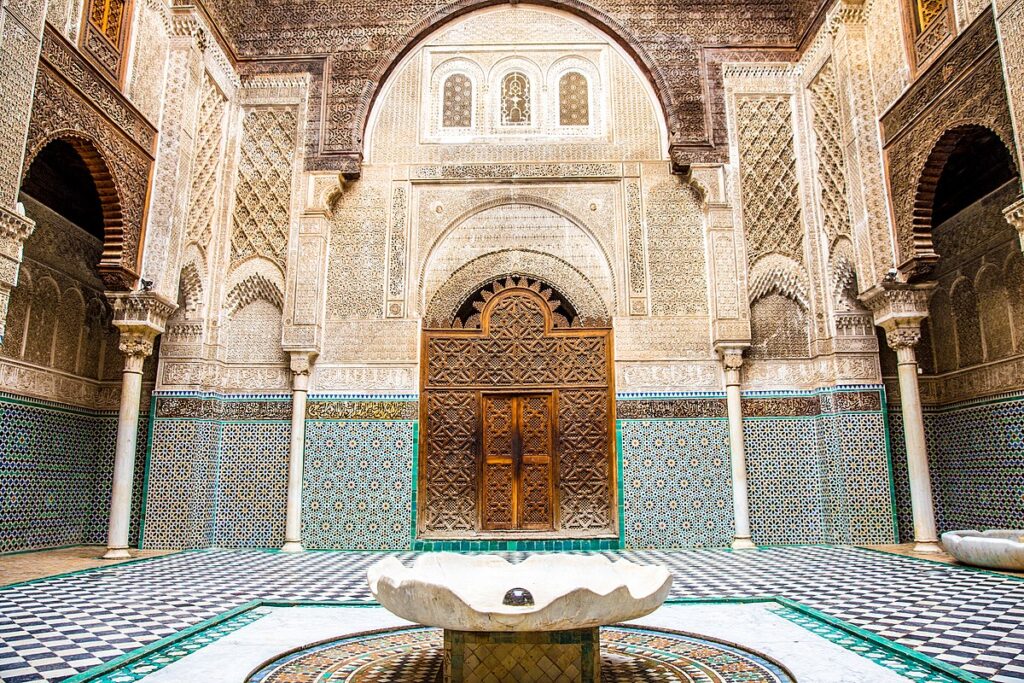
What do they teach in Madrasas?
Madrasas are educational institutions where students primarily study Islamic teachings. Here are the main things people learn in Islamic Madrassas:
- The Quran: A key part of their learning, which they read, recite, memorize, and interpret.
- The Hadith: Records of the sayings and actions of Prophet Muhammad. This helps them understand historical and religious contexts better.
- Arabic language: they are essential for accessing and understanding religious texts directly.
- Fiqh: Teaches them about legal principles derived from the Quran and Hadith, helping them apply these principles in everyday life.
- Other subjects: Mathematics is taught for practical problem-solving, while logic is introduced for critical thinking skills. Some schools might even offer classes in astronomy, which allows students to study celestial phenomena, and literature, providing exposure to classic Arabic texts.
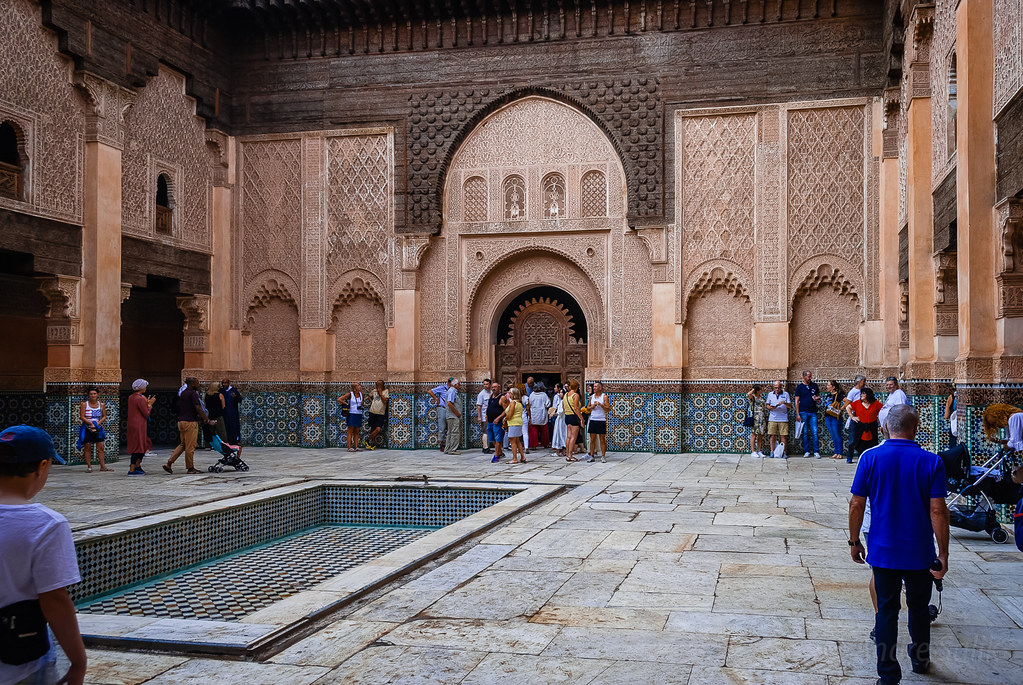
Architecture Of Madrasas in Morocco
Discover the stunning architectural designs and cultural importance of Moroccan Madrasas. Famous for their beautiful geometric patterns and meticulous craftsmanship. When you step inside, you will notice the walls, ceilings, and floors decorated with complex designs, showing the exceptional skills of local artisans of Morocco.
Most of Madrasas in Morocco have:
- Central Courtyards: Many Madrasas have a big open space in the center, like a courtyard. This is a cool spot for students to relax and chat, and it also helps keep the classrooms fresh.
- Living Quarters: Bigger Madrasas have rooms where students can live so they can fully focus on their studies.
- Domes and Minarets: The domes and towers mark special areas for prayer and symbolize the unity of the school community.
- Connected to Mosques: Most of the time, Madrasas are built right next to mosques, sharing a space or even having a hallway that connects them. This makes it easy for students to go between learning and prayer.
While Madrasas around the world can look similar, Morocco’s have their special flair that reflects the country’s rich art and history.
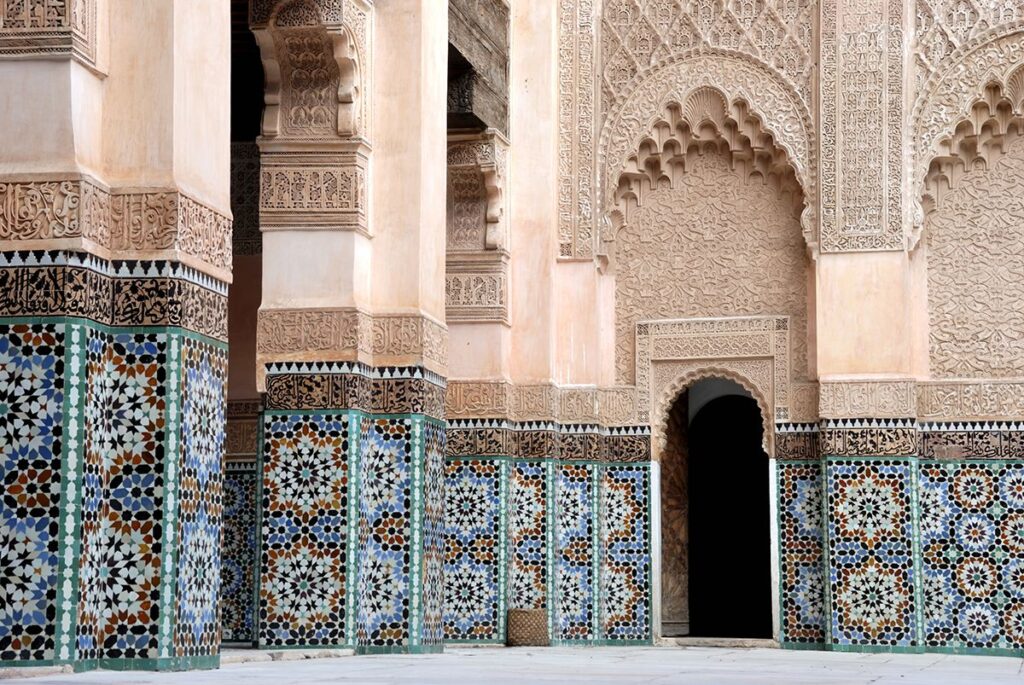
What is the role of the Madrassa in Morocco?
Madrasas in Morocco are special schools that teach people about Islam, Arabic language and some other subjects. They help keep Morocco’s Islamic traditions strong by teaching them to younger generations. Madrasas are more than just schools, they also teach important lessons about being good people and being part of the community. They can be like clubs where people learn more about Islam and grow closer to their faith.
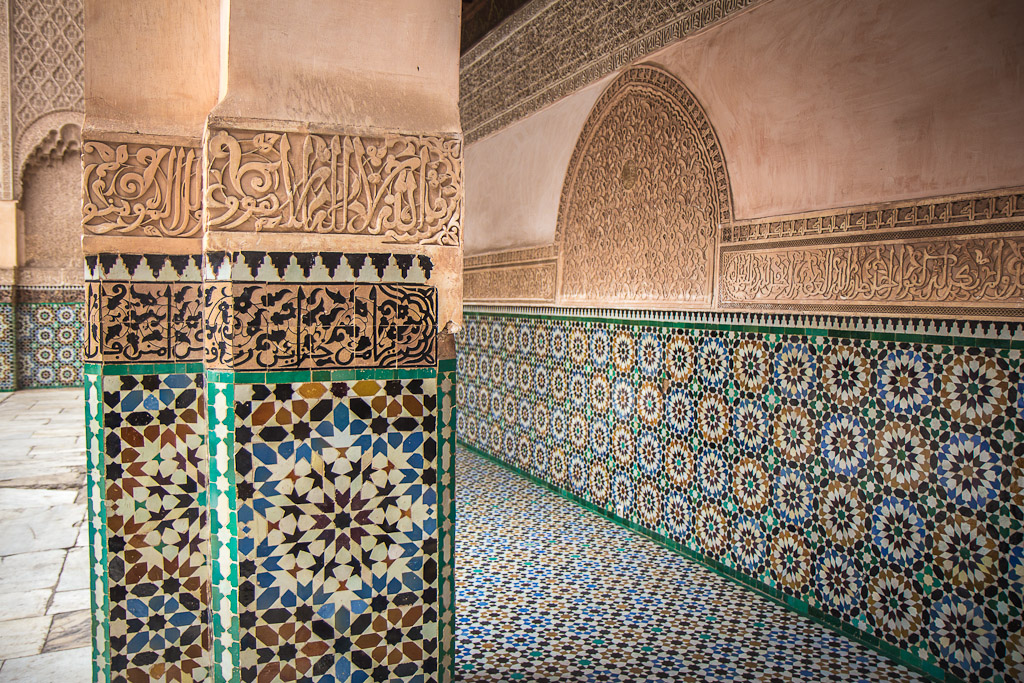
How many Madrassas are there in Morocco?
Morocco is home to numerous Madrassas, each serving as a key part of the country’s educational and cultural history. These institutions are not only centers for learning but also examples of Islamic architecture that attract many visitors. Here are some noteworthy Madrassas you might consider exploring:
- Ben Youssef Madrasa (1564-1565) – Located in Marrakech, this is one of the largest Madrassas in Morocco and is famous for its intricate decorations and large courtyard.
- Al-Attarine Madrasa (1325) – Situated near the world-renowned Al-Qarawiyyin University in Fes, this Madrasa is known for its beautiful zellij tile work and carved wood.
- Saffarin Madrasa (1271) – Also in Fes, this institution is one of the oldest and shows classic Moroccan architectural elements.
- Bou Inania Madrasa (1355) – Found in both Fes and Meknes, these Madrassas are known for their grand scales and serve as both educational institutions and mosques.
- Cherratin Madrasa (1670) – This is another Fes-based Madrasa, appreciated for its large size and role in the community.
- Sahrij Madrasa (1323) – Known for its unique water basin used for religious rituals, located in Fes.
- Madrasa Loukach (1758) – In Tetouan, this Madrasa stands out with its detailed craftsmanship.
- Madrasa of Sale (1341) – Located in Sale, it is known for its contributions to the spread of knowledge in the region.

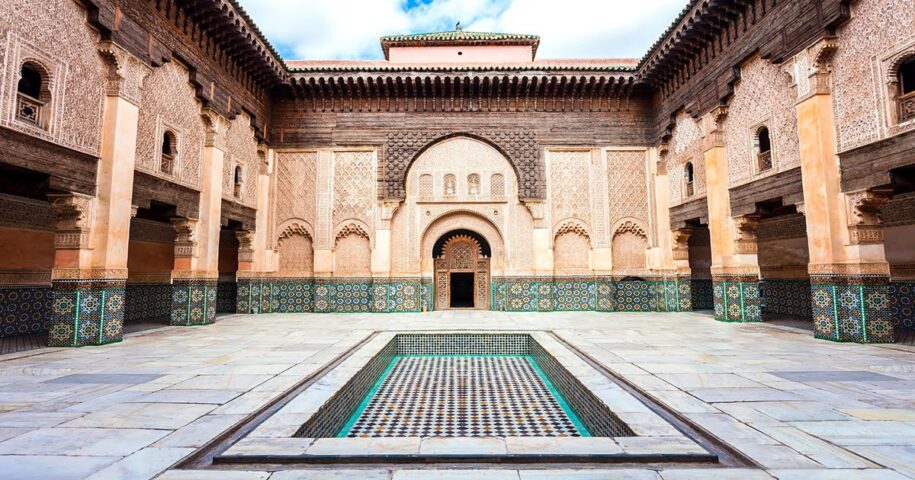
Leave a Reply